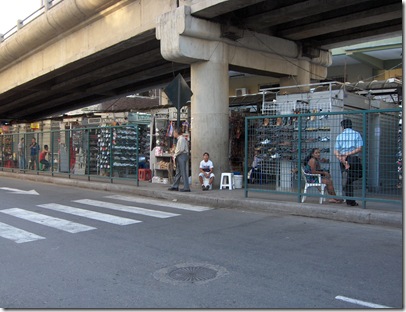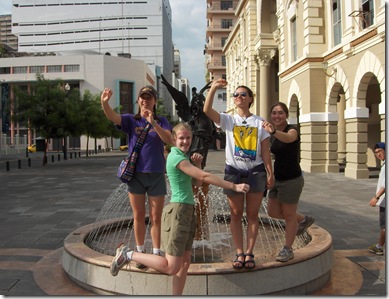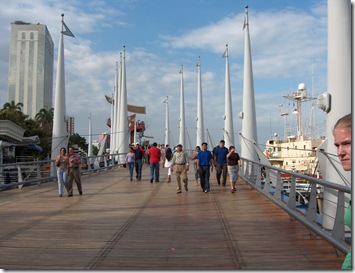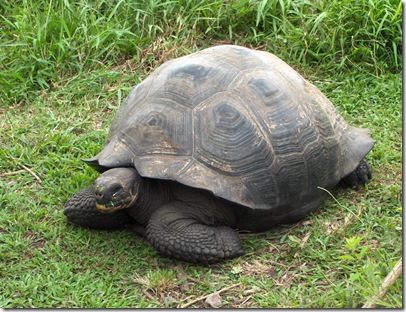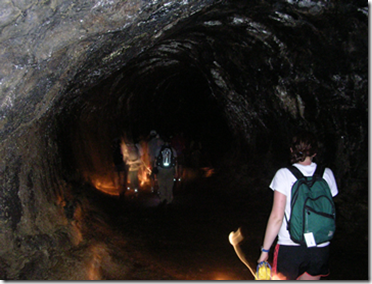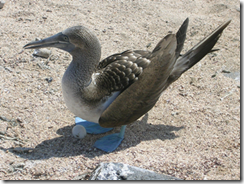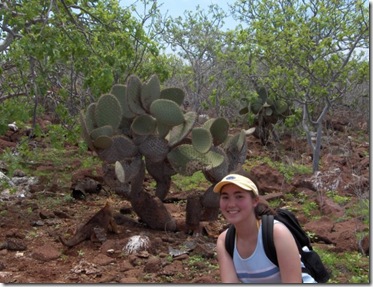

Today we flew from Ecuador to Baltra, Galapagos. Getting off the plane it was incredibly hot, and then I learned that the sun is 4 times stronger in the Galapagos than in Boston because of its proximity to the Equator. Baltra was very barren and desertlike. We then took a short bus ride Canal Itabaca, which was our first glimpse of the paradise that most of us were expecting. The water was a vivid blue-green, birds soar above us, crabs were crawling all over the rocks, fish swimming about, and a slight gentle breeze blew. We took a short 5 minute ferry across to Santa Cruz, where we'd be staying. We then took a bus from the boat dock on a twisty road through the lush, green, sweet smelling hills of Santa Cruz to Puerto Ayora. On the way to our hotel in Puerto Ayora, we stopped at a municipal waste site, where there was basically a bunch of burning trash.
After a lunch of we had free time to explore the town of Puerto Ayora. Meals in general over the course of the trip consisted of fish, rice, vegetables, dessert, and fruit juice. Our hotel was located near the water and near the playground, and near all the tourist shops. Venture further and you found more typical stores that sold cell phones, applicances, groceries, and clothing. I was actually surprised by the degree of civilization on the islands. The hotel I stayed at, Hotel Castro was nicer than I expected, although a little lacking in the hot water department, but it had air conditioning. All the stores used American money as currency, and there were internet cafes all over the place. Despite all these comforts, Puerto Ayora still maintained a quaint, rustic feeling.
Before dinner, we went to tortuga bay to swim. After a very long walk (3 miles!), we were finally greeted with gorgeous scenery and water. At the time, although we didn't know this, we were swimming in the Pacific Ocean and not Tortuga Bay which was further down. The water was the perfect temperature but the saltiest water I have ever experienced. There were marine iguanas all over the place, many well camoflauged against the dark rocks.
